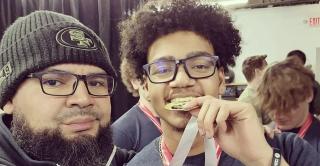
Google Home App for The Hartford
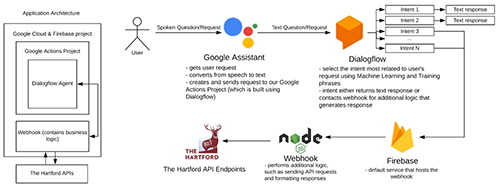
The Hartford, a major insurance company, wants to enable its customers to interact with the company via their channel of choice. Since the Google Home has one of the largest shares of voice-assistant devices in the US, The Hartford wanted to offer its current or perspective customers the ability to interact with the company via the Google Home. CSU team created a voice-enabled application for The Hartford that can offer advice on home and auto concerns, understand general insurance terms, learn about The Hartford, receive a quote, access information about an existing policy, and order new ID cards.
Product owner: The Hartford
Technologies: Dialogflow, Node.js
Platforms: Actions on Google, Firebase
PING
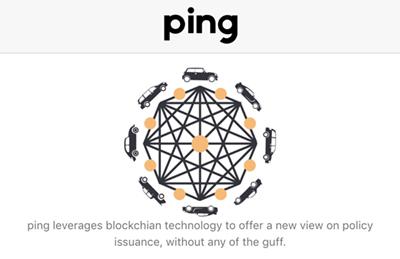
Ping is a policy issuance platform utilizing the Hyperledger Fabric blockchain framework alongside a full stack of modern technologies that allows users to choose the insurance policy that best fits their needs. The platform utilizes a decentralized ledger to store immutable information on a permissioned network across data sources. Blockchain is an emerging technology of which RapidQube is looking to leverage into the policy issuance domain. PING was developed to provide a platform for insurance companies seeking out blockchain solutions for their policy issuance needs.
Product Owner: RapidQube
Technologies: ReactJS, NodeJS, MongoDB, Hyperledger Fabric
Platforms: Microsoft Azure
Data-Mail Workflow Analytics
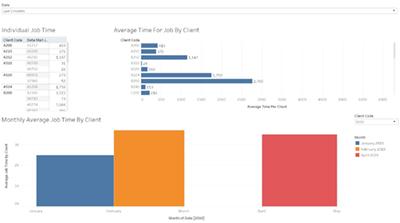
Data-Mail Inc, one of the nation’s leading full-service direct mail providers, wanted to upgrade its systems for tracking employee's time spent on preparing communications. This application was created to integrate with Data-Mail's data processing systems in order to accurately collect task data while reducing the need for manual data entry. With its new data model, the application allows for the collection and display of new analytic metrics regarding efficiency and performance.
Product Owner: Data-Mail Inc.
Technologies: ASP.NET, MS SQL Server, Tableau
Platforms: Microsoft Azure
Automatic Test Data Generation
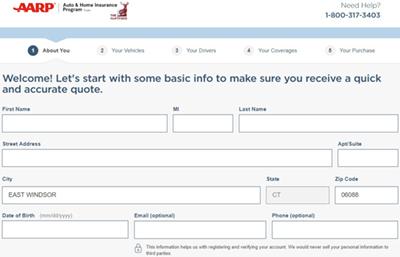
The Hartford’s Digital Sales Application prompts customers to enter personal information and driving history to receive a quote on their auto insurance. The Hartford asked students to automate the creation of test data for the application to support developers working under Shift-Left and DevOps methodologies. Test data creation is configurable to produce specific test cases. As a proof of concept, students used the Selenium WebDriver to automate the testing of their generated data on the actual Digital Sales Application website.
Product owner: The Hartford
Technologies: Python, Selenium WebDriver, Pandas
Digital Farmington
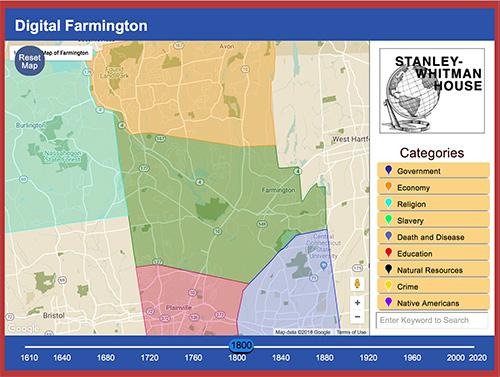
The Stanley-Whitman House museum in Farmington, CT maintains a project called Digital Farmington, which includes an interactive map and a blog. Central team created a new solution for the digital map of Farmington incorporating a range of features. It is possible to see how the town boundaries changed over the years, and how later the original town of Farmington was divided up into the town of Avon, Berlin, Bristol, Canton, New Britain and Southington. A number of different types of Points of Interest (POI) can be created/edited/viewed in a fashion synchronized with the timeline of the map.
Product owner: Stanley-Whitman House Museum
Technologies: Bootstrap, JQuery, MySQL, Google Maps
Tipevo
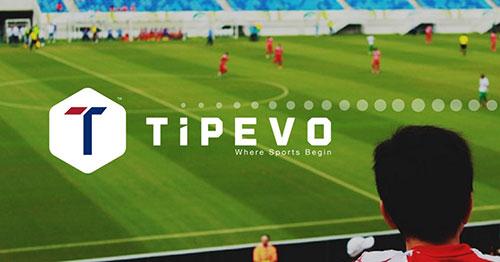
Tipevo is a digital platform dedicated to enhancing the youth sports experience. By combining an interactive directory with intuitive turn-key solutions, Tipevo enables players to “seamlessly search for programs, connect with the right team, and play your game.” The purpose of this project was to develop a prototype that uses two different AI techniques, Natural Language Processing (NLP) and Visual Recognition (VR), for automatic classification of information harvested from the web. The output collected from 3rd party NLP and VR APIs is converted into a rating structure developed by Tipevo. The objective of this prototype is to learn how to extract a writer’s sentiment from a paragraph of text and identify logos and other features within images.
Product owner: Tipevo
Technologies: Python, ReactJS
Platforms: Google Vision, Amazon Rekognition, Aylien
DevOps Dashboard
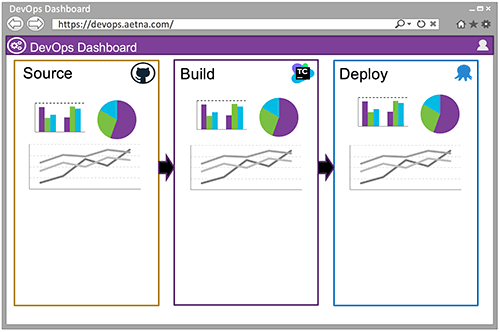
Aetna uses a DevOps pipeline for building and deploying custom applications which are written by Aetna developers. It primarily consists of GitHub Enterprise for source control management, TeamCity for building/compiling and post-build checks, and Octopus for deploying the applications. Central team created a web-based dashboard application to visualize the aggregate overview of the pipeline indicating what it being committed, built, and deployed at any given time. Typical queries processed by the dashboard application require working with 3rd party APIs: GitHub Enterprise API (number of active commits, commit history, statistics), TeamCity API (number of active builds, build history, statistics on technology type and programming language), and Octopus API (number of projects, active deployments, statistics on deploys per hour, and which kind of technologies are being deployed).
Product owner: Aetna
Technologies: ASP.NET, AngularJS, Bootstrap, TeamCity API, Octopus API
Platforms: Docker
On-call Scheduler

Aetna needed to replace the existing process of scheduling on-call engineers with a portable API-first application for the engineering teams to track their on-call schedules and also match applications to the engineers who support them. The application allows to view/add/edit/delete engineers and applications, to establish a relationship between each engineer and the applications that engineer supports, to manipulate the on-call schedule of each engineer, and to establish the primary, secondary, and escalation engineer, as needed.
Product owner: Aetna
Technologies: .NET Core, AngularJS, Bootstrap, MySQL, SQL Server
Platforms: Docker, AWS
RelationshipTree
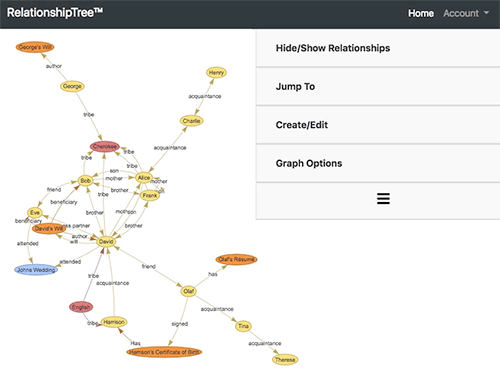
There are many genealogy applications like Ancestry.com that allow one to show ancestors and descendants, but these applications do not allow for other relationships, or even multiple parents as in the case of an adoptee. Dr Kathy Hermes envisioned an application that can map such non-traditional relationships including adoptee/adoptive parents and siblings, owners/slaves, non-nuclear families of Native Americans, etc. Central team created an application that could represent several layers of relationships that are not necessarily the nuclear family, but that can handle the kinds of data a genealogical application like Ancestry.com could hold the type of relationship, birth and death dates if known, and a brief information about the person.
Product owner: Dr Kathy Hermes
Technologies: AngularJS, Bootstrap, Node.js, Neo4J, Vis
Community Calendar Application
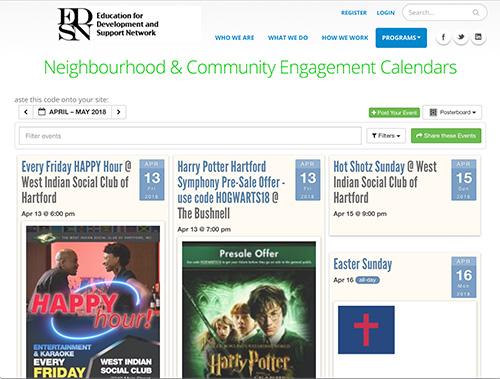
The Education for Development and Support Network (EDSN) Foundation provides free websites with community calendars to local self-help non-profit organizations as part of our technology and programming literacy service. These services are part of their larger mission to enable access to open educational opportunities emerging technologies afford, while managing side effects and responsibilities these technologies bring. EDSN’s existing community calendar system was not meeting their needs as a tool for providing programming literacy, and college gateway programs. Central team created a calendar-based community systems that allows creating/editing/searching/filtering/viewing events linking them to a range of 3rd party APIs.
Product owner: EDSN Foundation
Technologies: Bootstrap, PHP, MySQL, Google Maps
Platforms: WordPress
CTfastrak Application

CTfastrak is a regional bus rapid transit system operating between downtown Hartford and New Britain in Connecticut. CTfastrak provides General Transit Feed Specification (GTFS) data for use in a variety of applications. Using Google Maps API, several Central teams created a web-based application to help plan detailed routes between different points of interest in the greater Hartford region.
Technologies: GTFS, Bootstrap, Google Maps
The Road Warrior Project aka PlateScanner

The purpose of the road warrior project is to enable communication and to bring back some civility into how human behave behind the wheel of a car. This project aimed to use mobile devices to create a driver-only social network. Each driver setups a mobile device to have unobstructed view of the road ahead. The device attempts to scan and log license plate numbers ahead. Once the license plate will be successfully recognized, the user will be able to make remarks on the other driver via small number of predefined actions. All license plate records are stored in a database accessible from mobile devices, and owners of the plates are able to claim them. Once a user claims their license plate, they can view the previously generated comments.
Product owner: Spangle Inc.
Technologies: Java, C, PHP, MySQL
Platforms: Android, AWS, Google Cloud Messaging
Call Center Gamification
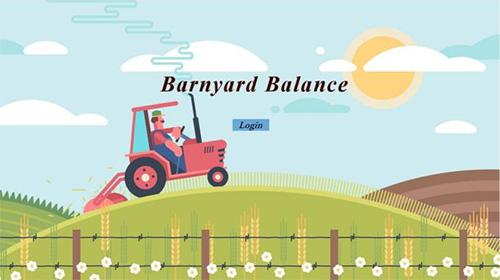
N Gage LLC needed an application to provide a 360 degree view of employee productivity in a typical call center. The application collects several Key Performance Indicator (KPI) data points from each call center representative (CSR) from an existing automatic call distribution system and migrates them into a virtual gaming environment (similar to FarmVille) in real time. Each CSR starts with a small farm. The KPI data and additional data captured will be monetized on a point basis to be used on a virtual farm. Developing the farm will not only add the elements of gamification into a typical CSR routine, but also would allow the call center management to compare the performance of different CSRs.
Product owner: N Gage LLC
Technologies: PHP, MySQL
Platforms: Apache XAMPP


